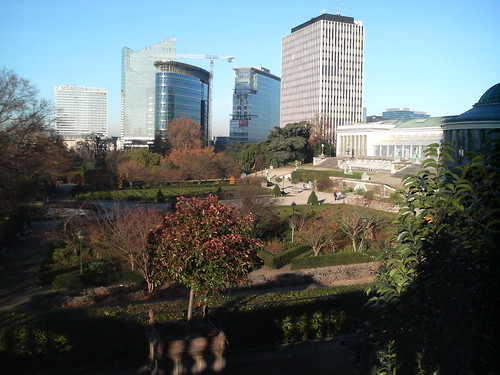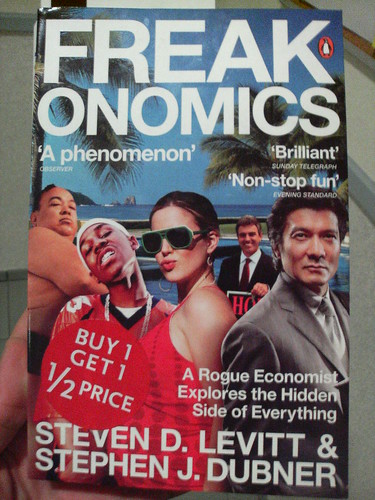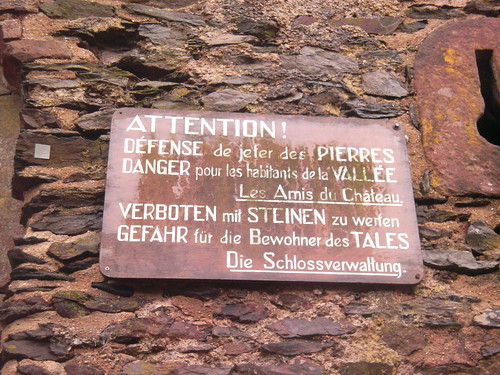Some of the best moments in football history, courtesy of YouTube
The Guardian has a very interesting article about sports history highlights now available because they’ve been posted at YouTube. Very interesting.
Check out especially the Garrincha highlight video.
Belgium and the Netherlands, so close but so different
I did a lightning trip to Amsterdam yesterday, and was really surprised at the slight but definite changes at the border between Belgium and the Netherlands, even though they’re both part of what is generally defined as the Low Countries and I had made the same trip before. Below some that I could think about:
- Languages: Suddenly people only speak English and Dutch in the train, German and French disappeared (except for the tourists, of course).
- Landscape: Much more channels, bridges and water surrounding you.
- Infrastructure: The train stations look newer. Funnily enough, they also look somehow dirtier.
- Architecture: We went past a few windmills, and there are some definitely distinctive elements of architecture that are not found in Belgium. Brussels is more Frenchified, the Netherlands looks somehow, well, I don’t know how to explain it… German/Nordic maybe? We also passed in front of a couple of mosques.
- Bycicles: I expected that to be part of the Brussels landscape, but it isn’t. In the Netherlands in general but in Amsterdam in particular bikes are everywhere.
Nordic alcohol consumption
I was discussing about that with a friend of mine who has never been in Finland, and had to explain him the basics: yes, Finns tend to have more, say, heavy-duty drinking habits, some people (especially the young) tend to literally drink to get drunk (so beers with high alcoholic content represent more value for money :-0 ), taxes to alcohol are therefore very high although they were dropped a couple of years ago and alcoholic beverages above a certain percentage are only available at the national monopoly.
The good news is that not everybody drinks like that (or maybe they do, but only in their student years 😉 ) and you find quite a few people who drink in a more Continental European kind of way (maybe some wine with food, but nothing of the harder stuff). Now that’s more like it.
Russian Kotka
Funnily enough, I read that Kotka in southeastern Finland wants more Russian immigrants. After the well-known animosities between both nations, and the prejudices Russians face there, it’s quite a surprising turn.
Belgian bureaucracy
I had heard before that Belgium is renowned throughout Europe for being so thoroughly bureaucratic. I didn’t want to believe it (after all, Latin countries have exacly the same problem), but, boy, were they right. I won’t rant here about the immigration/residence permit procedures, which are excruciating as usual, but even simple stuff like ordering cable TV and getting WLAN at our flat has been an ordeal. The bureaucracy at the school has been the exception that confirms the rule, though, they’ve been spotless.
My advice: if you move here, make sure you don’t need anything urgently.
The inventor for a cure for snoring…
would become a millionaire. Sorry to all that people I haven’t let sleep, now I know how it feels… =)
Recommended book: Freakonomics
Borrowed this book from a friend. Very interesting idea: using tools from economics to answer day-to-day questions. The second edition has also some posts from their blog (where I could lose myself for hours).
Bersuit Vergarabat
Another post in the Rock en Español series.
Bersuit Vergarabat is a band from Argentina, famous for their fusion of Rock, cumbia, chacarera and other Latin American rythms with very potent protest lyrics Even though they had released LPs since the beginning of the 90’s, they became famous in Latin America in 1998 with their song Sr. Cobranza, which was a very good reflection of the anti-governmental mood in youth at the time (this was just before the Argentine crisis). A very interesting band.
Yo tomo (Libertinaje, 1998)
Sr. Cobranza (Libertinaje, 1998)
La Argentinidad al Palo (La Argentinidad al Palo, 2004)
Madre hay una sola (Testosterona, 2005)
This was probably for the Mexican tourists…
“Attention:
it is forbidden to throw stones. It is dangerous for the inhabitants of the valley.
-Friends of the Castle”
Found at Vianden Castle in Luxembourg.


